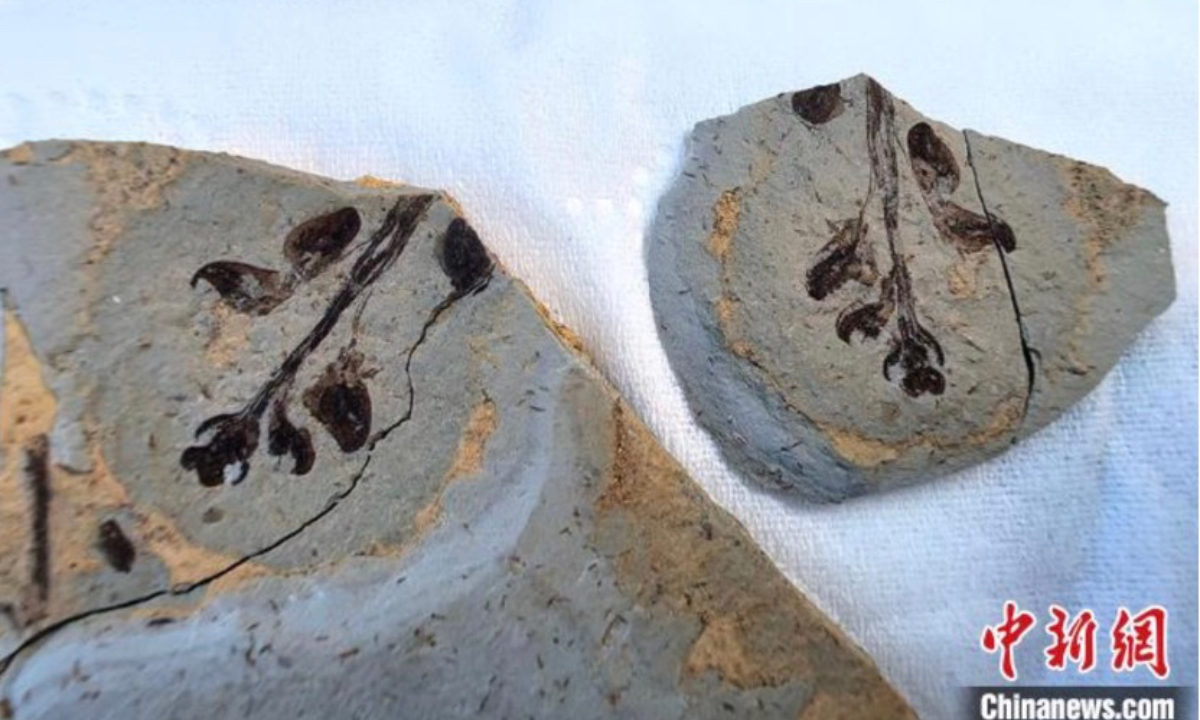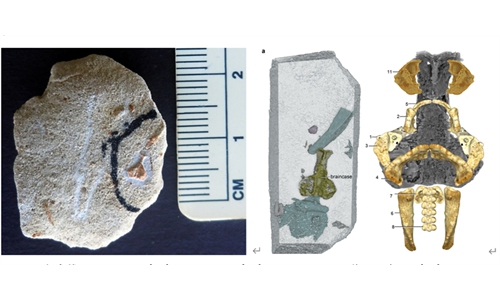
A flower fossil discovered at Shandong Laiyang Cretaceous National Geopark Photo: Screenshot from Chinanews.com
A precious flower fossil was recently discovered in Laiyang, East China's Shandong Province, the Chinanews.com reported on Thursday. Preliminary identification by experts suggests this fossil represents a new species of Early Cretaceous angiosperm with values for studying the evolution of early flowering plants.
The fossil was found by a research and study group from Linyi city, Shandong Province, during a research activity at Shandong Laiyang Cretaceous National Geopark, according to Chinanews.com.
This exquisitely preserved fossil not only retains its cuticle but also displays structures resembling calyx and petals. Black spots vaguely visible at the ovary position are suspected to be its seeds, Chinanews.com reported.
After preliminary examination, Chen Lei, a member from the national paleontological fossils expert committee, said this may constitute a novel species of Early Cretaceous angiosperm, carrying significance for studying the evolution of early flowering plants, the report said.
"This fossil could potentially serve as crucial evidence for researching the origin and early evolution of angiosperm, and also holds profound scientific value for reconstructing paleoecosystems," Chen noted.
Further investigations including morphological analysis of flower-like structures and cuticular microstructure studies will be conducted to reveal the true nature of this peculiar plant, the expert said.
According to the report, Laiyang occupies a prominent position in China's paleontological research heritage, being among the earliest regions where Chinese geologists and paleontologists discovered fossilized remains of dinosaurs and their eggs, pterosaur specimens, insects and primordial flora.
Global Times



